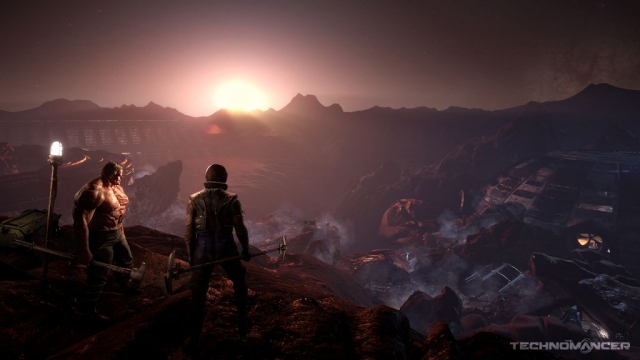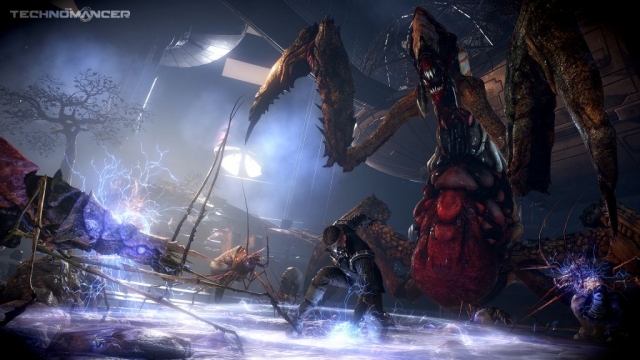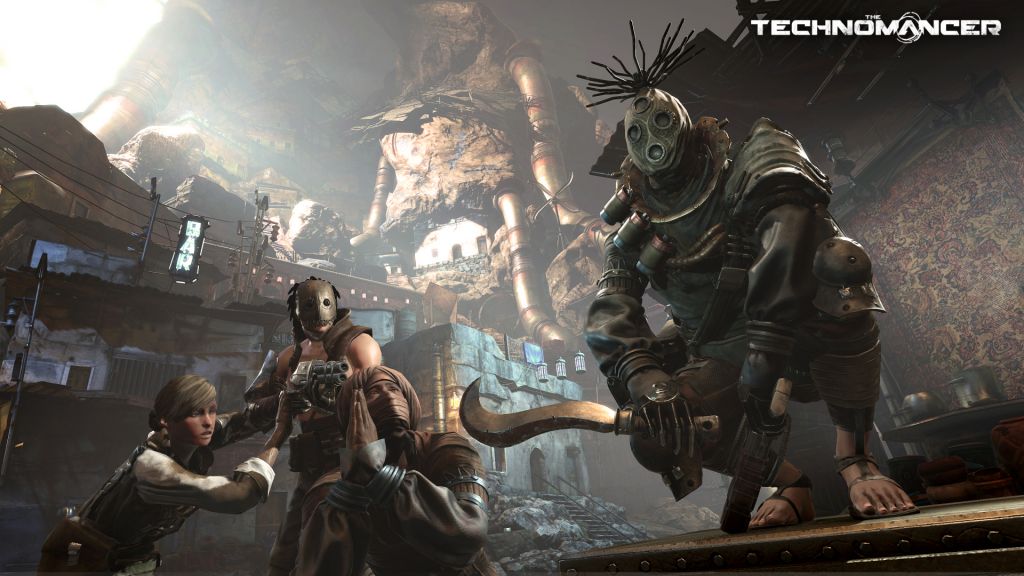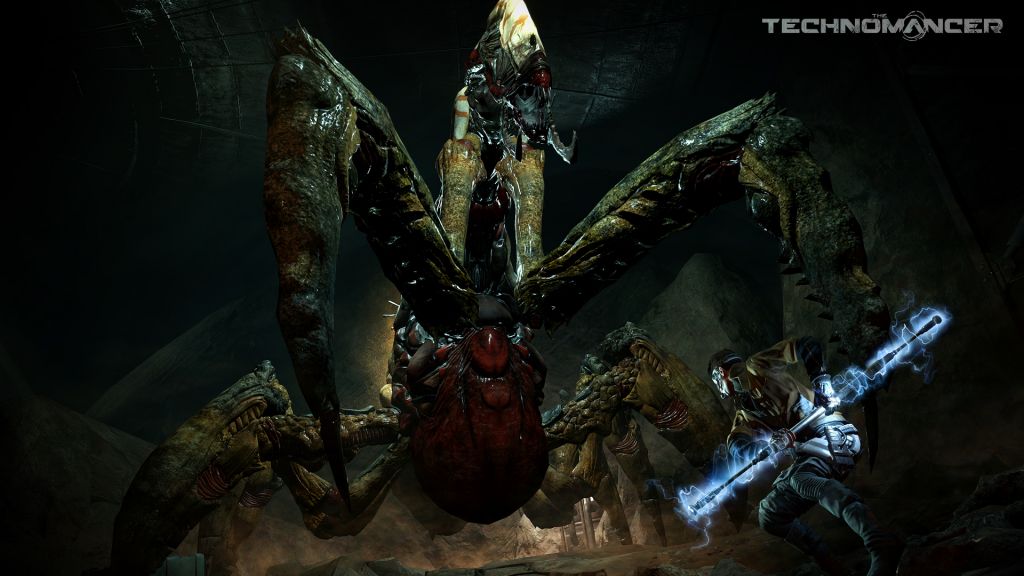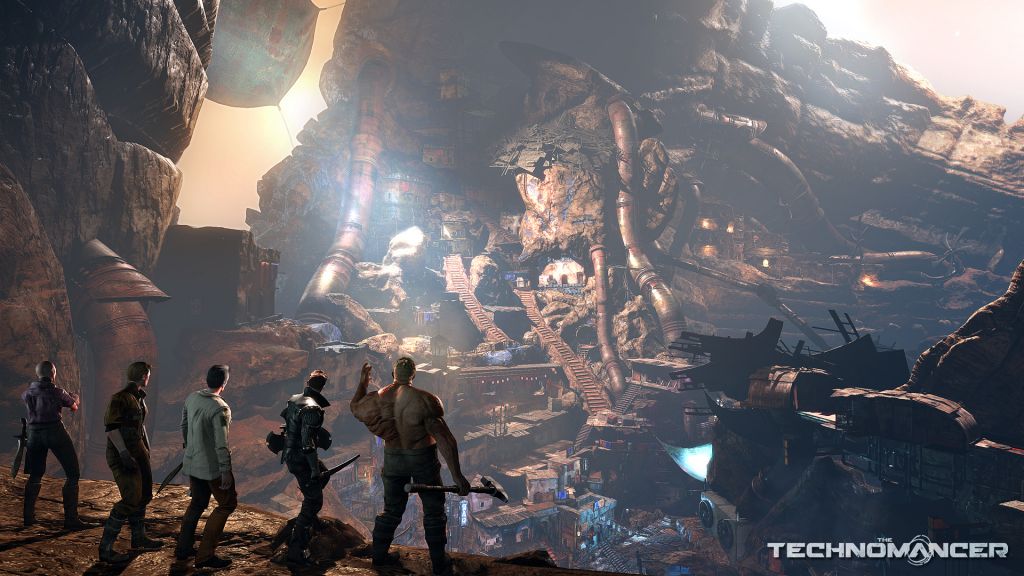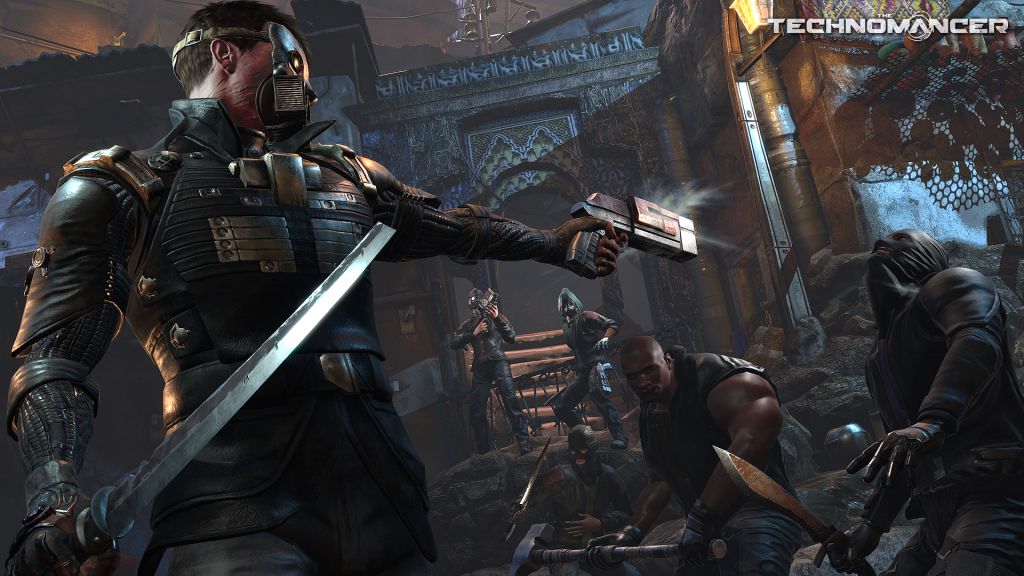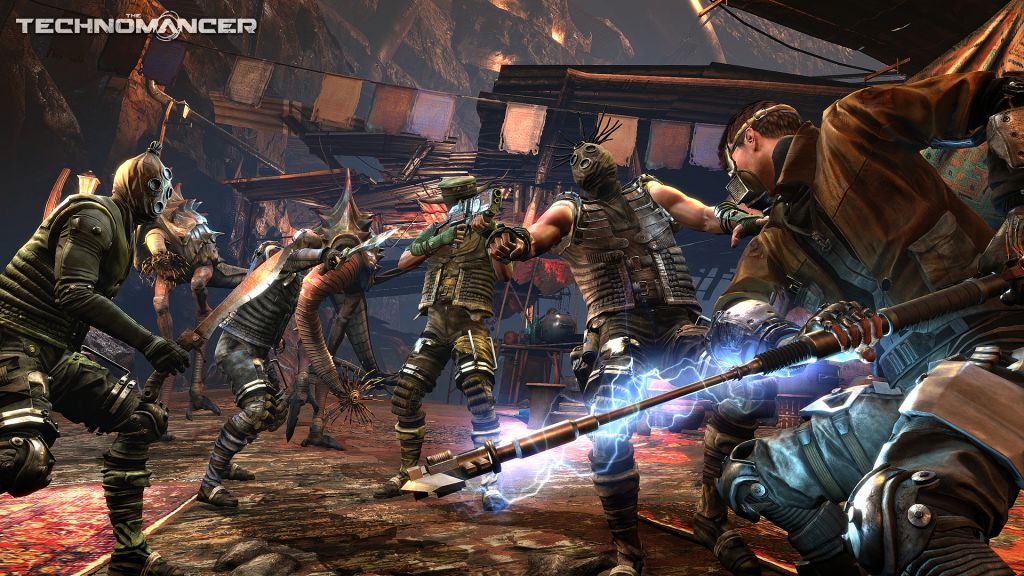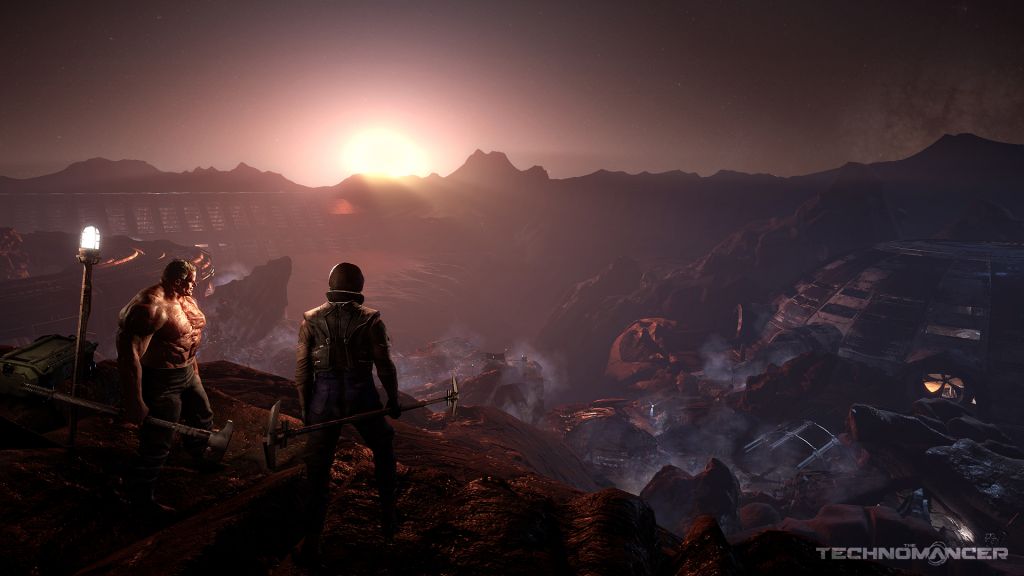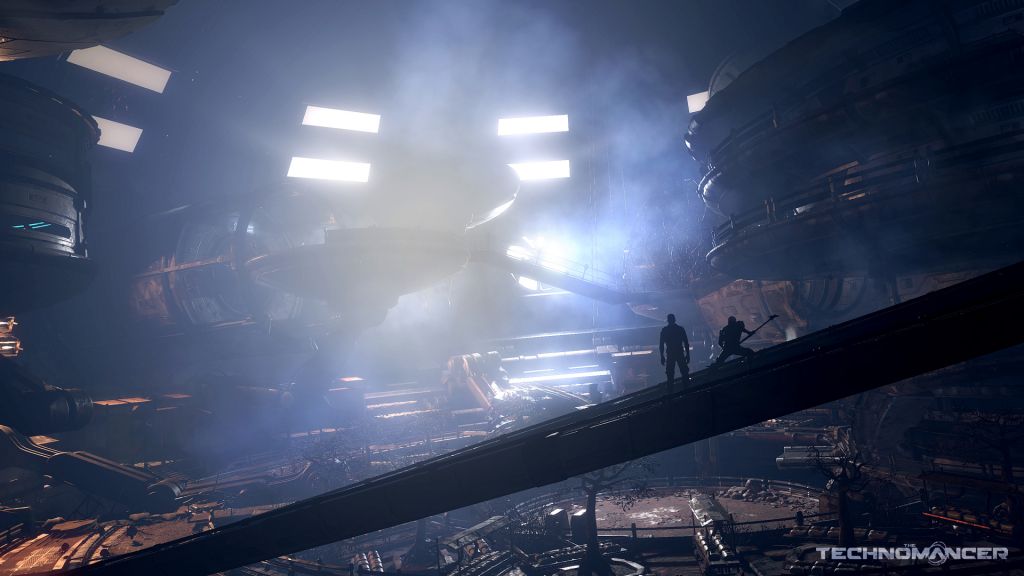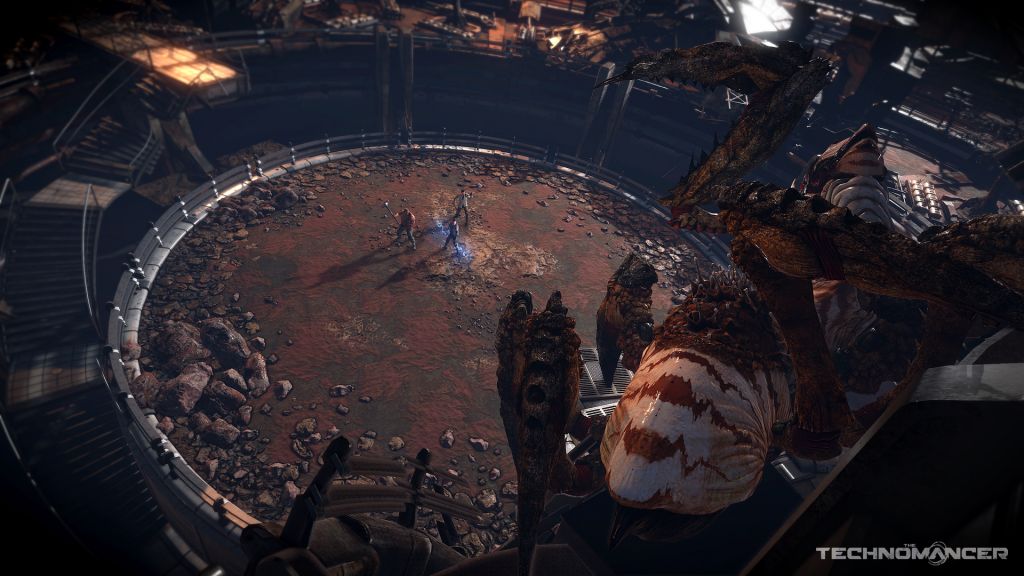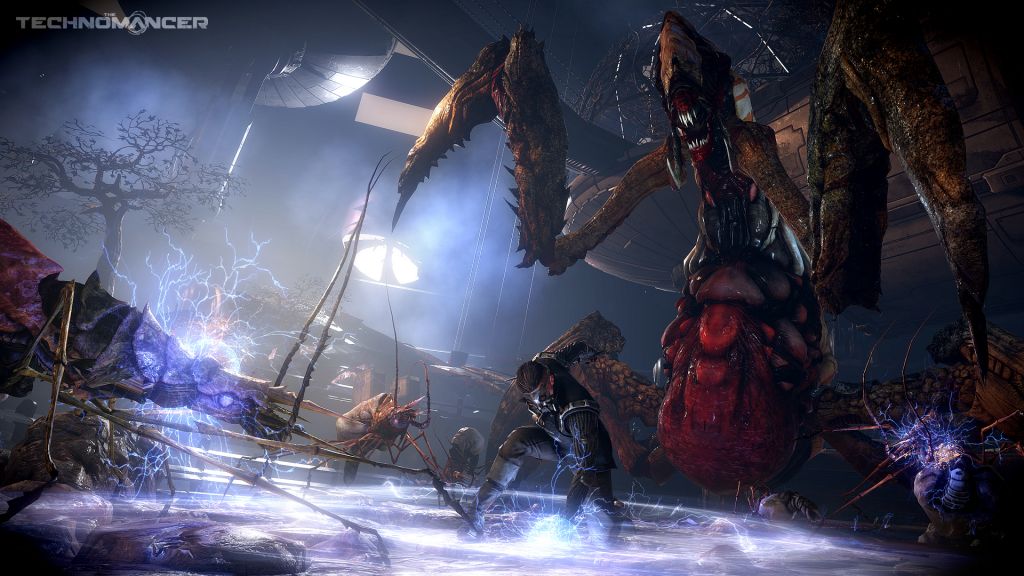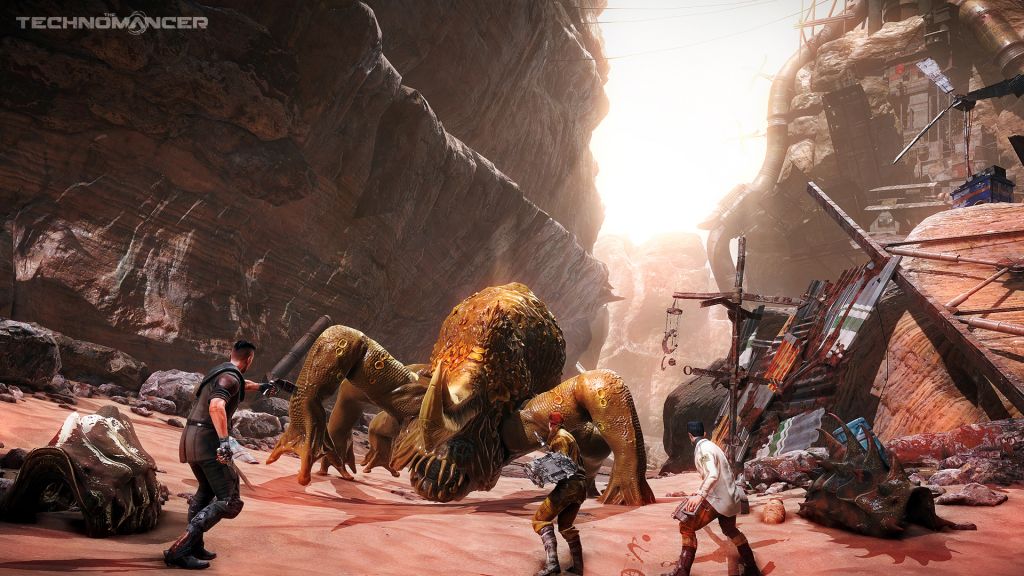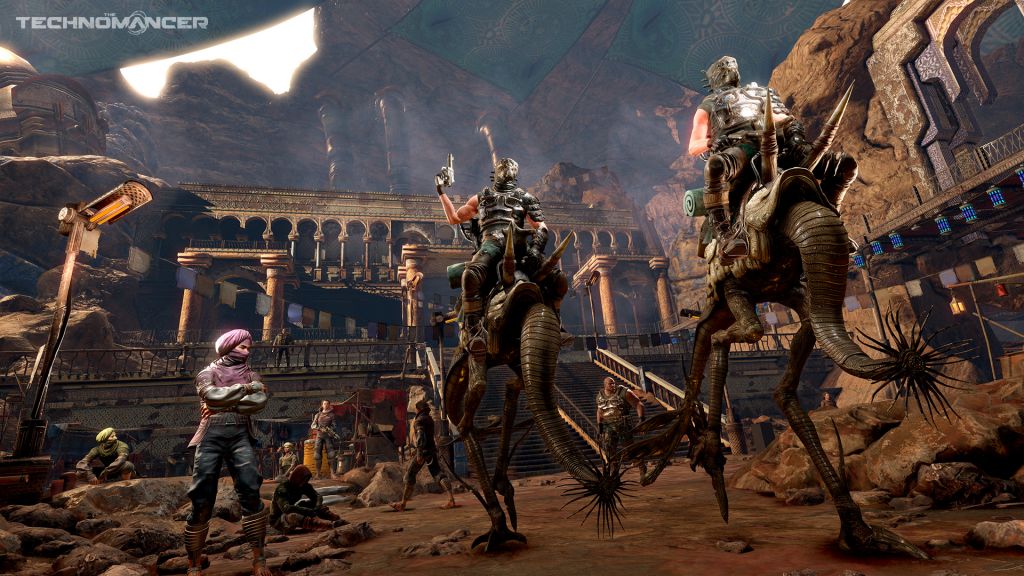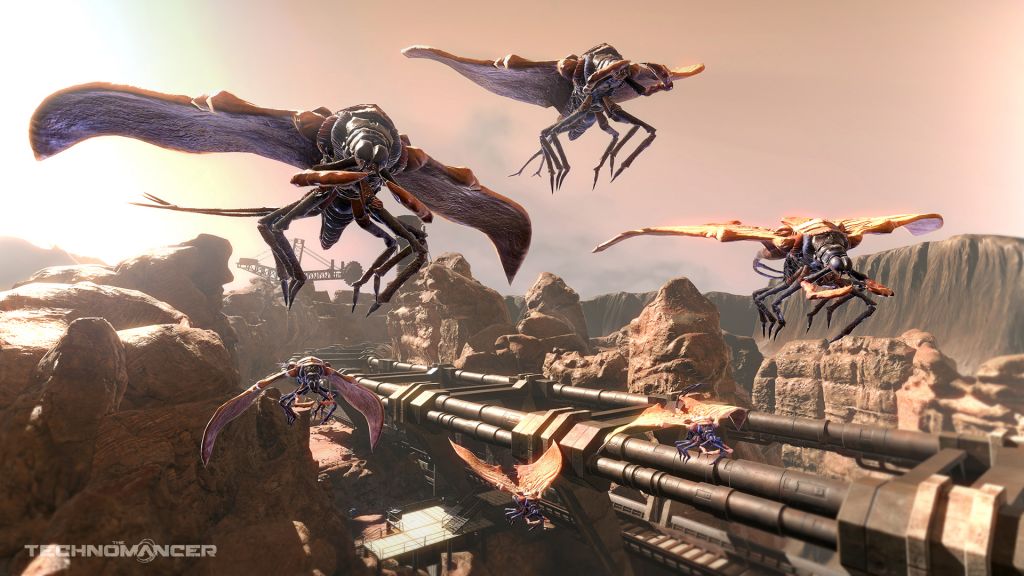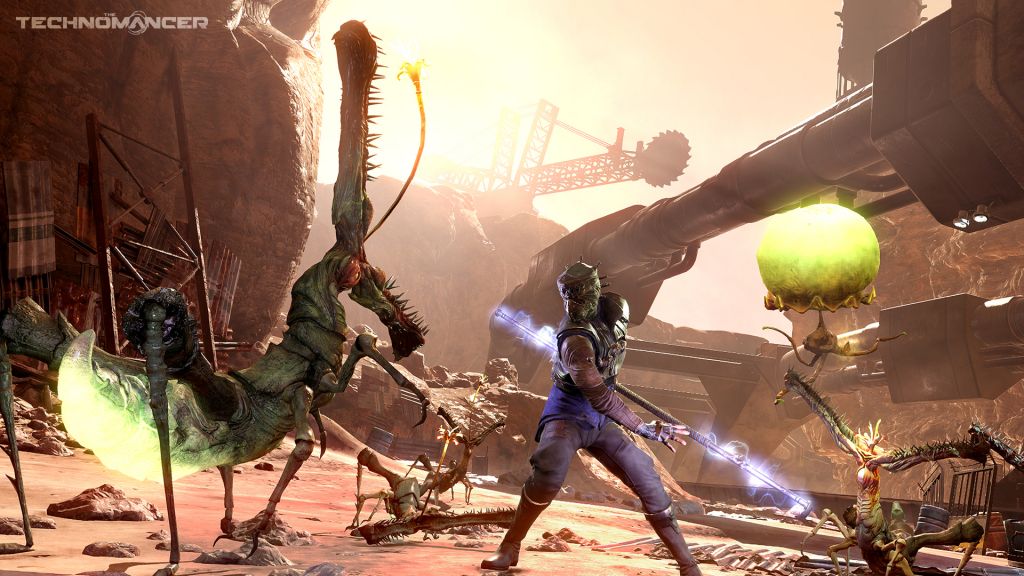The Technomancer
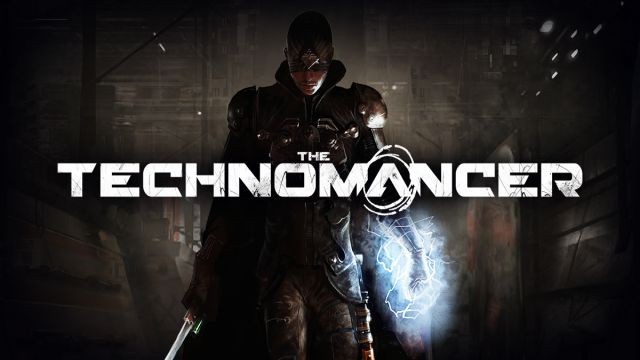
The Good: Hmm. I’m really stumped here. Better menuing structure than Mars: War Logs?
The Bad: Minimally interactive scenery. Uninspiring plotlines. Sloppy combat engine. Lackluster party members. Poor voice acting. Bland scenery palette. Irritating boss battles. Technomancer powers kind of suck. I could go on and on.
The Ugly: Dull advancement options make leveling up less interesting than it should be, and drains me of the will to keep playing. Worst music ever.
I was disappointed by the clunky combat, dreary color palette, and meh leveling options of 2013’s Mars: War Logs, and I remain doubly so by The Technomancer, a second entry in the Mars RPG universe also from Spiders Studio. For those of you with short attention spans, you can take that summary and call it a day. For those of you looking for a deeper analysis, read on.
The Technomancer, like M:WL before it, is set on Mars. Mars is not a good place to raise the family. The solar radiation causes significant mutations, the place is crawling with hostile flora and fauna, and what little water is available on the planet is strictly controlled by a few megacorporations who field secret police forces to advance their corporate causes. Mars is also not a great place to set a video game, as just about everything you see is some shade of red or brown. You play as a Technomancer, a human imbued with the ability to wield electricity in combat. The role of the technomancers in this society is not well established (pseudo-jedi, hired mercenaries, thugs, saviors, good guy stranger in town, who can tell?), but the role you’re given is as a special officer working for one of the corporations (Abundance), quashing rebellion, crushing dissent, arresting undesirables, and being generally a fascist a-hole. The core of the game plotline is whether or not you choose to play that role, side with the rebellion, or forge some other destiny for yourself. I played it sort of like a loose cannon. I let a deserter get away (not because it was easier to do so, because the kill him/let him go decision came down to a simple menu choice), but because my boss reminded me of a female Hitler. Later I arrested the head of the rebellion (again through a menu choice – arrest/kill/let escape) because she was a woman, and I didn’t want anyone to accuse me of being chauvinistic. All of the games moral moments seem to come down to menu choices, and it makes the whole affair feel very lightweight. The game claims to have five different endings depending on how I spool out all of these choices, but I will admit that ultimately I lacked the patience and energy to complete the game even once. Side quests have managed to break away from the previous go-here-and-kill-this-guy-then-go-there-and-kill-that-guy formula, adding in some escort, rescue, and other options beyond simply killing, but I’m not sure if I feel like handing out an award for that or anything – it is 2016 after all.
The combat system, strongly focused on melee, is divided into thirds. You can wield a long staff in a quick attack and dodge posture (guardian), carry a shield and one-handed weapon and slug it out gladiator style (warrior), or fight with two weapons, a blade/club in one hand plus a gun in the other (rogue). Layered on top of these are technomancer powers. While you’re busy circling an opponent you can let go of your staff for a moment with one hand and shoot a ball of lightning. My complaints from M:WL remain – combat is clunky and the controls are only middling responsive. Targeting with both guns and technomancer attacks is iffy. Enemies are low on smarts but stratospheric in hit points. Some also wield powerful guns that you don’t get to pick up when you defeat them – you apparently only get the opportunity to catch their bullets. Sidekicks are weak and uncoordinated and pointless. As near as I can tell, the combat engine remains the same disappointing one used in M:WL, requiring you to spend 90% of your time dodging around like mad while four or five enemies try and bludgeon you to death.
If asked to pick the worst part of this game, I’m torn between the ear-grating, syntho pop, dear-god-don’t-make-me-listen-to-another-note music and the entirely vanilla featureless leveling options. Someone needs to buy the guys at Spiders a book on game theory, because they have no idea what makes people want to keep playing a game. When I work towards leveling a character up, and the choices I’m presented with when I do so are improving an attack damage by 10% or improving a dodge evasion by 10% or incrementally improving the rate at which my juice recharges, I’m not exactly all goosebumpy to keep working. Similarly, my weapon and armor upgrades, which I accomplish by collecting pieces of trash (leather scraps, metal bits, electronic components) and then building them at a workbench, offer such breathtaking options as damage +1 or armor +2. Oooh, which shall I choose?!?
I have to add a quick piece about the technomancer powers in general – they’re terrible. They are powered by a supply called juice which recharges slowly, so if you were hoping to go into combat hurling lightning bolts everywhere, you’re out of luck. You might get, for an extended combat, half a dozen tech attacks in. Also, while in M:WL the technomancers were shown to have a number of different capabilities (I specifically remember something like a force shield), all you get here is the ability to throw (inaccurately) balls of electricity that don’t do all that much damage, and an area effect that doesn’t do all that much damage. Why do people think of the technomancers as such badasses again?
Without actually loading up M:WL to check, I’m having trouble finding any of the myriad of things that I felt were wrong with that game that were addressed in the creation of this one. It’s like Spiders purposely avoided reading any of the M:WL reviews and learning a thing from them. They did do some work on the menuing structures, especially when dealing with merchants, so instead of awful the menus now work about as well as any other interface in any other game. And they made the game bigger, with several regions to travel around. In this case bigger is definitely not better. Technomancer clearly shows its roots in M:WL. This is not a good thing. Even years after reviewing it, I’m still left with overwhelming feelings of ‘meh’ about M:WL, and The Technomancer, though undoubtedly a more expansive game, does nothing to rise above that meh-ness.
Reviewed By: Phil Soletsky
Publisher: Focus Home Interactive
Rating: 45%
——————————————————————————–
This review is based on a digital copy of The Technomancer for the PC provided by Focus Home Interactive.
 Game Over Online
Game Over Online